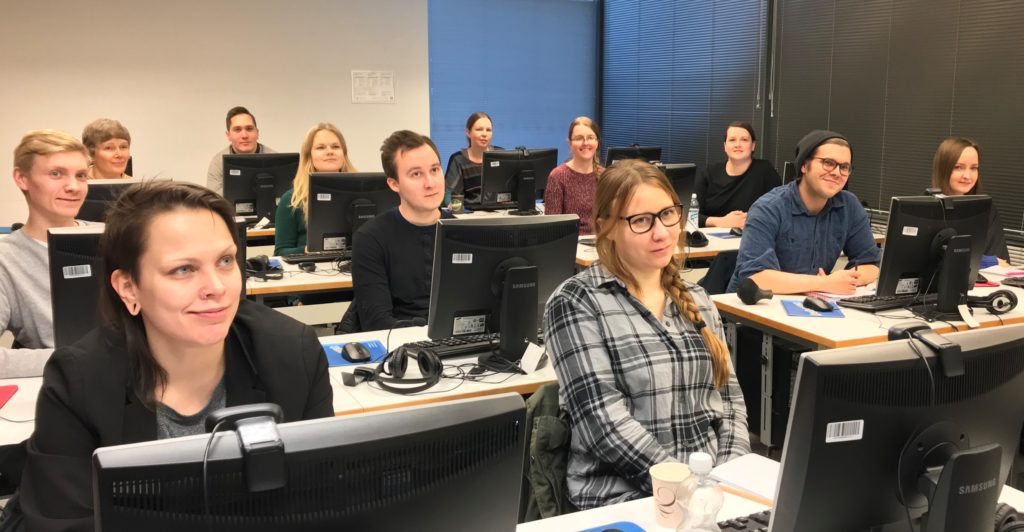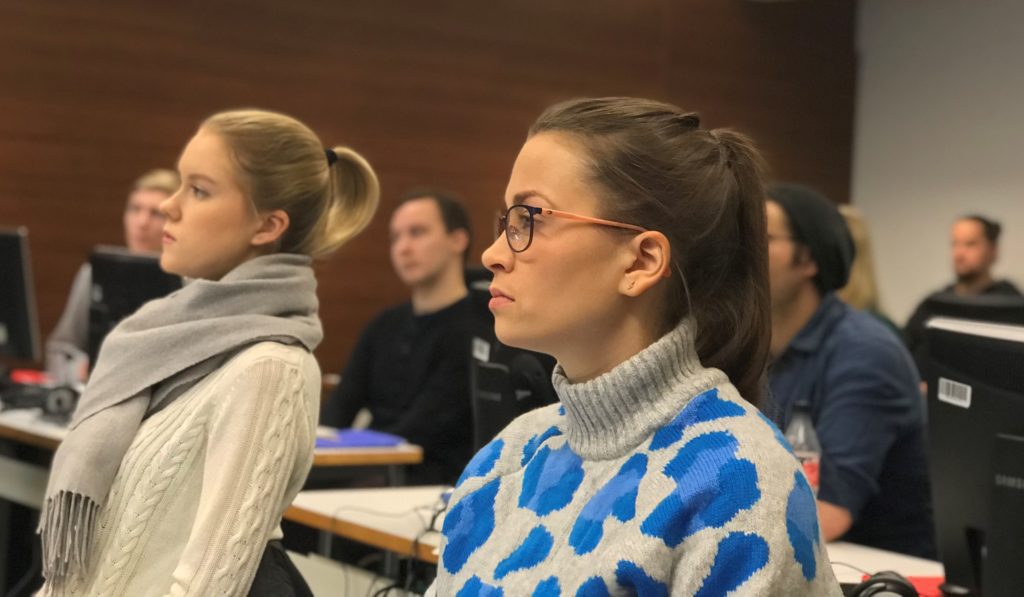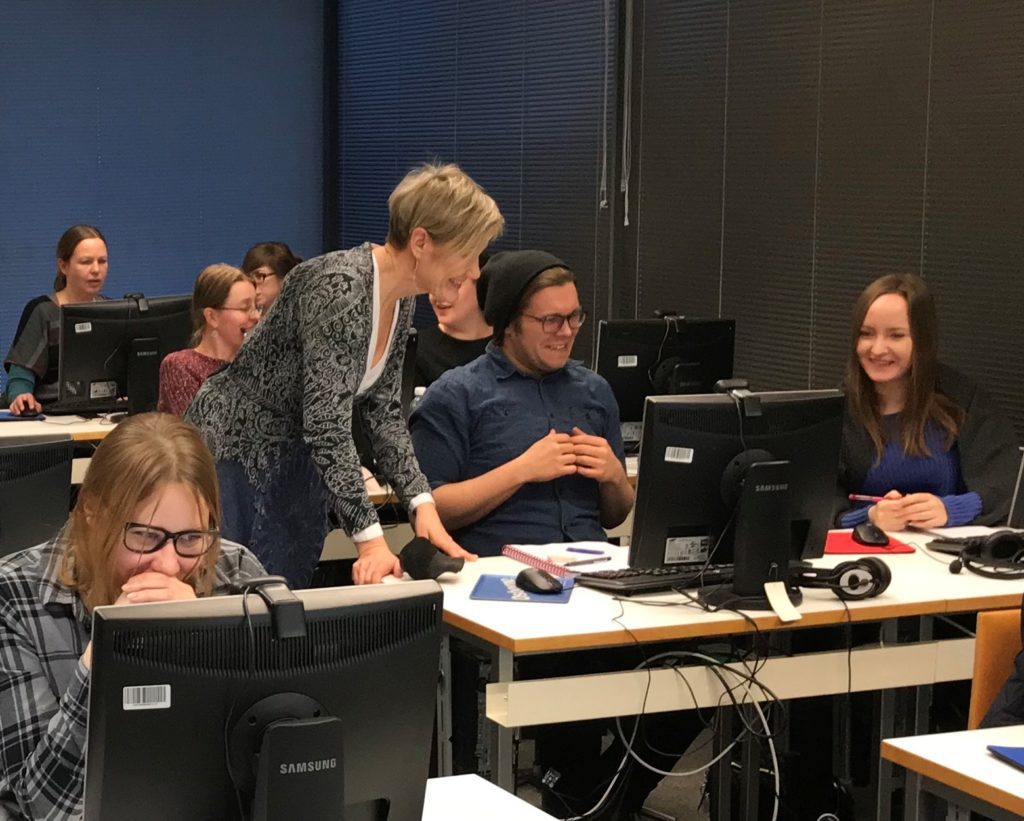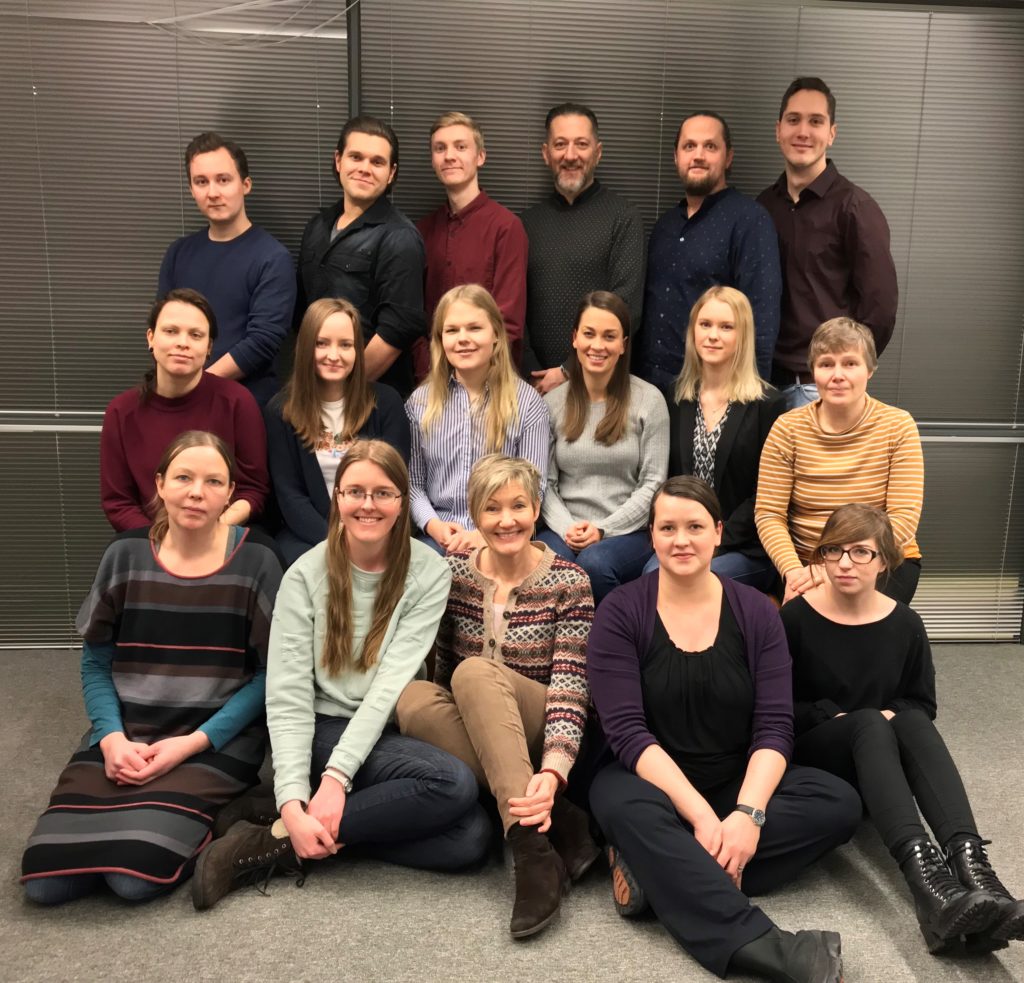Sixteen students approaching the end of their studies. One teacher interested in enhancing their employability. Two company executives keen to share the “what”, “why” and “how” of the language industry. One Nordic capital in deepest, darkest midwinter.
The fifth annual course introducing soon-to-be translation graduates to the global service industry kicked off at the University of Helsinki this week. The class of 2019 approached it with maturity and curiosity from the start. Everyone was familiar with at least one CAT tool – a great improvement on the first group I taught five years ago – but the notion of different rates for translation work involving translation memory matches or machine-translated output was still unfamiliar to them.

Pooling our personal experience from Nordic translation companies over the past 25 years with market research published by language industry organisations, my co-teacher Danilo Monaco and I taught the group about the global translation market – its size, profile and structure – and how it has evolved into what it is today. We discussed industry characteristics and trends: how different players can add value to long outsourcing chains, what is driving the current market consolidation and whether new players are disrupting the industry.
The students learned about the language service providers and their services, first by defining what vertical markets are and then by putting eight translation companies from different parts of the world under a magnifying glass to scrutinise their differentiators, business models and brand. We tried to assess their relevance to us today, whether as potential clients, employers or future suppliers. We looked at the translation industry organisations, deciphered the most common ISO standards and talked about the principles of quality management.

After that, we went through the job roles in the translation industry one by one, learning about the main tasks involved in each role as well as the performance evaluation criteria and career progression paths for each role.
As practical exercises, the students tried their hand at transcreating marketing taglines and scheduling a multi-translator project. By comparing notes after individually revising the same translation from English into Finnish, they realised how subjective the nature of linguistic revision work can be despite their best efforts to adhere to agreed rules and style guides.

A Harvard Business Review article published this week noted that 40 per cent of adults in Scandinavia have university qualifications. As tertiary degrees become more commonplace, they lose their value as a differentiator in the recruitment race.
To catch the attention of a recruiter, a new graduate needs to have a wow factor – a rare skill, demonstrable intellect or experience in an area which their rivals have not had access to. The latter unique selling point is what our sixteen students gained this week.
The translation industry is an industry of relationships. By teaching this week, we have laid the foundation for fruitful networking between new and experienced industry professionals. The other two teaching weeks of this course, in March and May, will build on that foundation and expand the network further by introducing new teachers from other Finnish translation companies to the group.





